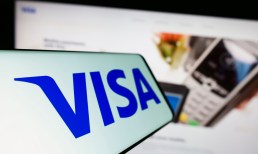While B2B payments innovation often takes a page or two out of the business-to-customer (B2C) payments world, the rise of the gig economy and freelance professionals have challenged the payments space to develop solutions that can appear to be a hybrid of corporate and consumer solutions.
Gig workers, for instance, often operate as independent professionals, or even entrepreneurs running their own enterprise. Yet, because they are hired or contracted out by business clients, they do not have the ability to pay themselves — and often struggle to receive timely electronic payments.
This point of friction is one area in which the B2B/B2C lines are blurred, with disbursements an area of payments innovation that often focuses on the B2C market. Yet, in the world of gig workers, freelancers and even service workers, disbursements need B2C agility combined with B2B features, like analytics and reporting.
This month’s PYMNTS Disbursements Tracker details several of the latest trends in digital disbursements that also blur the line between B2B and B2C payments.
Faster and real-time payment technologies are other areas of payments innovation that tends to target consumer transactions, particularly in the peer-to-peer space. Yet, in disbursements innovation, corporates’ ability to pay their workers, gig professionals and freelancers has opened doors for faster payment solutions to disrupt corporate transactions.
“On-demand services and new instant payment solutions are both natural byproducts of advancing technology,” said Ingo Money CEO Drew Edwards in the latest Disbursements Tracker.
Advertisement: Scroll to Continue
Consumers, he continued, are getting used to “instant, universal and customizable” services, and that demand bleeds into their lives as employees or gig workers. The restaurant industry is one market ripe for faster disbursements innovation as waiters and other restaurant staff seek faster payouts for their tips at the end of every shift.
“We have already seen the intersection of these two phenomena [as] restaurants and [quick-service restaurants (QSRs)] embrace real-time digital disbursements [to pay] out tips to workers,” Edwards said. “Workers are increasingly demanding faster and more convenient ways to get paid.”
Real-time disbursement capabilities enable restaurants to more efficiently compensate their staff without extra administrative burdens or the need to physically divvy-up cash at the end of the night. One company featured in this month’s Tracker, Kickfin, aims to facilitate this function in the food services market by sending mobile alerts whenever they receive funds, whether wages or tips. Meanwhile, the Tracker noted, food delivery services such as DoorDash and Postmates, as well as ridesharing firms Uber and Lyft, similarly embrace digital tipping — a function that can support electronic, faster payouts to those professionals.
“Workers [who] rely on tips are going to start expecting to receive their funds in the same ways that consumers pay,” the Tracker said. “Restaurants and other businesses in the service industry that want to remain competitive are going to need to follow consumer demand, and innovate their payment experiences.”
That goes for both the consumer and their workers.
The gap in the market is significant, however, with 93 percent of companies today not meeting consumers’ demand for real-time B2C payments, according to the Tracker. Plus, research found, an estimated 29 billion annual disbursements are able to benefit from faster transaction speeds. Analysts estimated that the total value of real-time compensation will hit $34 billion in the next five years, so companies need to not only explore faster and real-time payments for their consumers, but for their payroll and worker payout processes as well.



